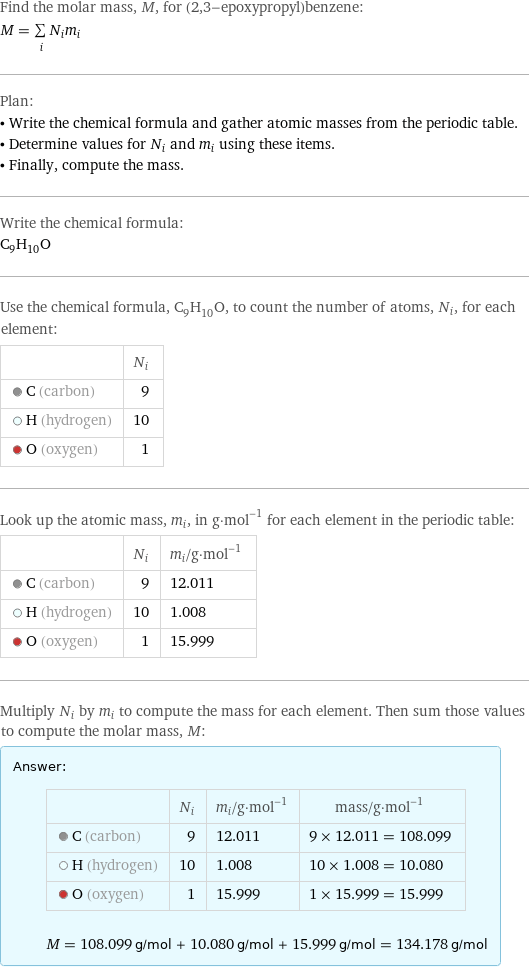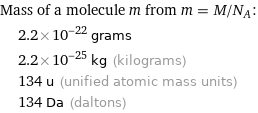Input interpretation

(2, 3-epoxypropyl)benzene | molar mass
Result

Find the molar mass, M, for (2, 3-epoxypropyl)benzene: M = sum _iN_im_i Plan: • Write the chemical formula and gather atomic masses from the periodic table. • Determine values for N_i and m_i using these items. • Finally, compute the mass. Write the chemical formula: C_9H_10O Use the chemical formula, C_9H_10O, to count the number of atoms, N_i, for each element: | N_i C (carbon) | 9 H (hydrogen) | 10 O (oxygen) | 1 Look up the atomic mass, m_i, in g·mol^(-1) for each element in the periodic table: | N_i | m_i/g·mol^(-1) C (carbon) | 9 | 12.011 H (hydrogen) | 10 | 1.008 O (oxygen) | 1 | 15.999 Multiply N_i by m_i to compute the mass for each element. Then sum those values to compute the molar mass, M: Answer: | | | N_i | m_i/g·mol^(-1) | mass/g·mol^(-1) C (carbon) | 9 | 12.011 | 9 × 12.011 = 108.099 H (hydrogen) | 10 | 1.008 | 10 × 1.008 = 10.080 O (oxygen) | 1 | 15.999 | 1 × 15.999 = 15.999 M = 108.099 g/mol + 10.080 g/mol + 15.999 g/mol = 134.178 g/mol
Unit conversion

0.13418 kg/mol (kilograms per mole)
Comparisons

≈ ( 0.19 ≈ 1/5 ) × molar mass of fullerene ( ≈ 721 g/mol )

≈ 0.69 × molar mass of caffeine ( ≈ 194 g/mol )

≈ 2.3 × molar mass of sodium chloride ( ≈ 58 g/mol )
Corresponding quantities

Mass of a molecule m from m = M/N_A: | 2.2×10^-22 grams | 2.2×10^-25 kg (kilograms) | 134 u (unified atomic mass units) | 134 Da (daltons)

Relative molecular mass M_r from M_r = M_u/M: | 134